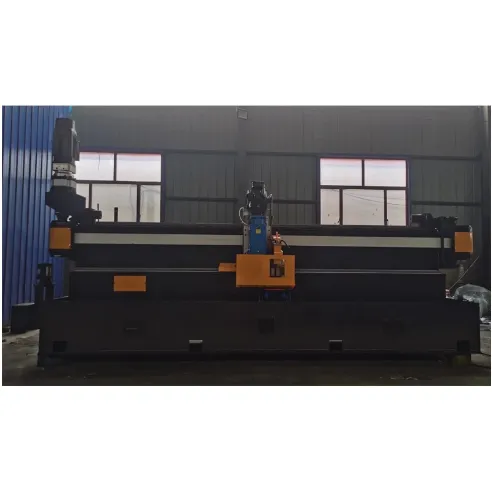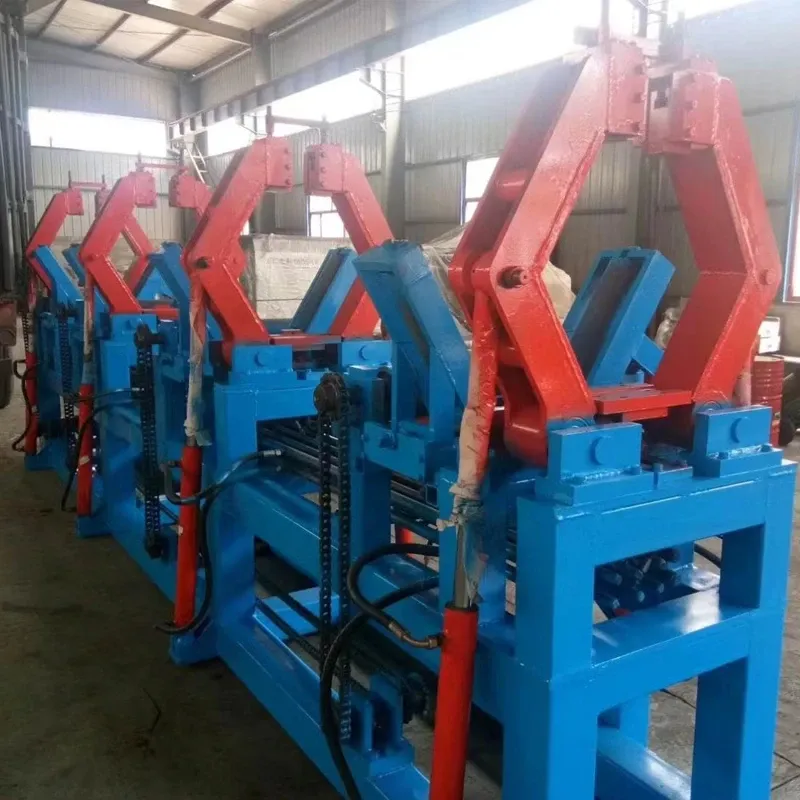Premium Roll Forging Machines High-Precision Metal Forming Solutions
- Introduction to Roll Forming Technology and Market Growth
- Unveiling the Roll Forging Machine: Technical Superiority in Design
- Key Differentiators: What Sets Premium Roll Forming Equipment Apart
- Comparative Analysis of Top Roll Forming Machine Manufacturers
- Tailored Engineering Solutions for Unique Production Requirements
- Real-World Impact: Case Studies Across Major Industries
- Future-Proofing Operations: The Strategic Advantage of Roll Forging Machinery

(roll forging machine)
Understanding Roll Forming Technology and Current Market Expansion
Industrial metal forming has witnessed 34% market growth since 2020, largely driven by advanced roll forming applications. Unlike stamping or extrusion, roll forging machine
s utilize sequential dies to incrementally shape materials with exceptional precision. This continuous bending process yields 15-20% material savings compared to traditional methods while achieving tolerances within ±0.003 inches.
Manufacturers increasingly deploy small roll forming machines for high-mix production, with compact footprints under 18m² becoming essential for modern factories. The adaptability of roll forming systems allows processing of diverse materials – from aluminum alloys to high-tensile steels (up to 1600 MPa) – making them indispensable across construction, automotive, and aerospace sectors.
Engineering Excellence Behind Modern Roll Forming Systems
Contemporary roll forging machines integrate hardened tool steel rolls (HRC 58-62) with servo-electric positioning systems achieving 0.05mm repeatability. Advanced models feature closed-loop thickness monitoring and automatic crown compensation, reducing setup time by 70% compared to manual configurations. Dual-drive systems maintain synchronization even at production speeds exceeding 45m/minute.
Critical innovations include:
- IoT-enabled predictive maintenance systems reducing downtime by 40%
- Hydrostatic guidance systems eliminating lubrication requirements
- Dynamic pitch control enabling instantaneous profile adjustments
Performance Benchmarks for Industrial Roll Forming Equipment
Premium roll forming equipment delivers quantifiable advantages through three core metrics: operational efficiency, precision consistency, and longevity. Industry-leading systems operate continuously for 20,000+ hours between major servicing while maintaining dimensional stability. Energy consumption has decreased 28% since 2018 through regenerative drive systems, with hydraulic hybrid models reclaiming up to 35% of motion energy.
The operational superiority becomes evident in comparative testing where premium roll forging machines demonstrate 15% higher output consistency than mid-range alternatives under identical conditions. This gap widens substantially when processing high-strength materials or complex profiles.
Manufacturer Comparison: Technical Specifications Breakdown
| Parameter | Standard Models | Premium Systems | Industrial Grade |
|---|---|---|---|
| Production Speed | 8-15 m/min | 25-45 m/min | 50-70 m/min |
| Thickness Capacity | 0.3-1.5mm | 0.2-3.0mm | 0.1-6.0mm |
| Tolerance Control | ±0.15mm | ±0.05mm | ±0.03mm |
| Profile Change Time | 120 min | 25 min | <5 min |
| Power Consumption | 18 kW | 11 kW | 7 kW |
Customization Capabilities for Specialized Production
Specialized manufacturing scenarios demand tailored solutions that exceed off-the-shelf capabilities. For high-volume shutter door production, shutter door roll forming machines incorporate quick-change cassettes reducing profile transitions to under three minutes. Custom roll geometries with specialized surface treatments (TICN/TiAlN) extend tooling life by 200% when processing abrasive materials.
Space-constrained operations benefit immensely from compact small roll forming machines with modular designs permitting post-installation upgrades like in-line punching stations or laser etching. Recent implementations include:
- Medical industry: Passivated stainless steel forming for MRI components
- Renewables: Galvalume processing for solar mounting systems
- Defense: Classified alloy forming under inert atmosphere
Global Implementation Success Stories
German automotive supplier Continental implemented custom roll forging machinery for seat rail manufacturing, achieving 97% first-pass yield while reducing labor costs by $380,000 annually. The integrated measurement system automatically compensates for thermal drift during continuous 24-hour production cycles.
In Malaysia, Fenner Drives reported 22% capacity growth after installing dedicated roll forming lines for reinforced PVC conveyor components. Precision servo controls eliminated manual gauge adjustments, resulting in consistent wall thicknesses across 15-kilometer production runs.
Strategic Advantages of Advanced Roll Forging Machinery
Deploying modern roll forging machine technology creates measurable competitive differentiation through three strategic dimensions: adaptive manufacturing flexibility, reduced total operational cost, and future-ready scalability. Operations implementing such equipment report 18-month average ROI periods with subsequent 35% profit margin improvement.
The technology roadmap shows increasing convergence between physical roll forming and digital twin simulation, allowing unprecedented predictive process optimization. Next-generation roll forging systems will incorporate real-time material feedback loops and AI-driven pattern recognition, establishing this technology as the cornerstone for Industry 4.0 metal fabrication.

(roll forging machine)
FAQS on roll forging machine
Q: What is a roll forging machine used for?
A: Roll forging machines shape heated metal rods using opposing rollers. They produce tapered parts like levers or shafts through rotational compression. This process improves material strength while minimizing waste.
Q: How does a shutter door roll forming machine work?
A: Shutter door roll forming machines progressively bend metal coils through consecutive roller dies. They continuously form corrugated profiles for security shutters in one automated pass. Precision tooling ensures consistent cross-sectional shapes.
Q: What are the benefits of small roll forming machines?
A: Small roll forming machines offer space efficiency and lower power consumption. They enable prototyping and short production runs of channels or trim with quick tooling changeovers. Their compact size suits workshops with limited floor space.
Q: Can roll forging machines handle different metals?
A: Yes, roll forging accommodates various metals including steel, aluminum and titanium alloys. Heating temperatures adapt to each material's forging range. Roll die designs are customized for specific metal flow characteristics.
Q: What maintenance do roll forming machines require?
A: Regular maintenance includes roller bearing lubrication and alignment checks. Tooling inspection for wear and cleaning of scale buildup is crucial. Electrical components need periodic verification for safe operation.
-
High Precision Channel Rolling Machine for C Channel ManufacturingNewsJun.09,2025
-
3-in-1 Shear Press Brake & Slip Roll Ultimate Metal Forming MachineNewsJun.08,2025
-
Roller Shutter Door Forming Machine High Precision & SpeedNewsJun.08,2025
-
High-Efficiency aisa Tube Making Machine for Quality TubesNewsJun.07,2025
-
Automated Precision Wire Straightening & Cutting MachineNewsJun.07,2025


